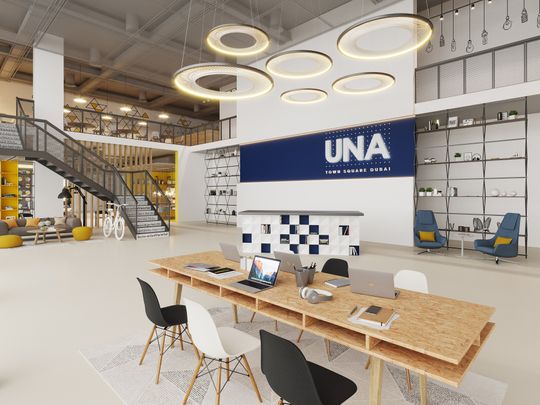
The softening market has made developers look at the market differently.
No longer are they relying on the “build-it-and-they-will-come” approach of the UAE’s formative years.
They are now considering market needs and how best to service those needs.
The co-living and co-working model, which is already proving popular in some major cities around the world, is now a key strategy for some of Dubai’s biggest developers.
What is co-living?
Many will already be familiar with the concept of co-working, as characterised by renowned serviced office providers such as Regus and Servcorp.
This model offers private office space to freelancers and self-employed individuals, but facilitates shared amenities such meeting rooms and other equipment.
They also create an environment where entrepreneurs can share ideas and knowledge.
Some of the newer co-working spaces in Dubai include Nasab by KOA, Astrolabs in Jumeirah Lakes Towers and Nest in Barsha Heights.
These spaces are usually licensed — and rent or membership is paid daily or monthly — so it’s completely flexible.
It’s the success of the co-working model which has most likely sparked the rise of the co-living phenomenon.
The concept of co-living is simple. It’s focused on creating a community; a shared, collaborative and affordable way of living.
However, co-living should not be confused with residents sharing rooms, as this would not be allowed under Dubai law.
Instead, residents enjoy private apartment spaces within a building or complex, but share communal facilities such as media rooms with large movie screens or TV rooms.
The idea is that this environment helps combat isolation, loneliness and the general disconnection found in today’s society.
Anyone can rent a co-living space, but it’s unsurprisingly proving most popular with millennials (between the ages of 22 and 36), currently a large consumer demographic in the UAE making up 36 per cent of the population.
Research has shown this demographic values experiences over material items.
Furthermore, just as with the co-working model, one of the most attractive things about co-living is flexibility.
The UAE is known for its transient culture, so with people coming in and out for project work, or for those who work for global companies and get regular reassignments to different offices, such a living option is ideal as traditionally these spaces can be rented on a weekly or monthly basis.
Essentially co-living and co-working spaces are rising in popularity because they instill a sense of community, shared experience and above all offer convenience, which is something millennials place significant importance on. This is a sizeable cultural shift and something developers are picking up.
Leading the trend in the UAE?
Our recent Q1 2019 Observer report suggests high demand for such off-plan projects.
From the total number of all transactions in Q1 at MBR City, just over 70 per cent were for Emaar projects; with Collective Tower and Socio at Dubai Hills representing most of those sales.
Both projects are centered on co-living spaces.
The Collective, set in the heart of Dubai Hills Estate, is an 11-million-sq-m master-planned scheme the size of about 1,500 football fields.
It provides an array of amenities that is marketed above and beyond what is expected from a conventional co-living space.
From Dh671,000 for 1BR unit
Prices start from Dh671,000 for a one-bedroom apartment, so these spaces are primarily aimed at investors who are looking for a sound return on investment through resale or rental income.
UNA, developed by Nshama at the Town Square community, offers a collection of studios and one-bedroom apartments and serves as a licensed co-working space.
The 2,000-sq-m lobby lounge is the social hub of the development, featuring work stations, a music room, games corner, TV room, reading spaces and creative zones.
Other amenities also include a gym, retail stores, restaurants, cafes, laundry and cleaning services and outdoor recreational facilities. They will also have the convenience of a shuttle service to the nearest Dubai Metro station.
KOA’s Canvas project off Mohammad Bin Zayed Road, while not directly marketed as a co-living and co-working space, is targeting the millennial demographic, positioning itself as a creative hub.
Then there is the Dubai Design District cluster, already a hotspot for millennials, which will have its own residential offering in the medium term.
While co-living and co-working are growing global trends, it’s possible Dubai could set the bar for high-end, technology-enabled co-living solutions.
With its commitment to deliver smart technologies and nurture tech entrepreneurship, coupled with developers increasingly focusing on this new form of residential living, there is no doubt we could see this trend taking a hold in the UAE’s residential market in the coming years.
Ivana Vucinic is head of consulting at Chestertons Mena.













